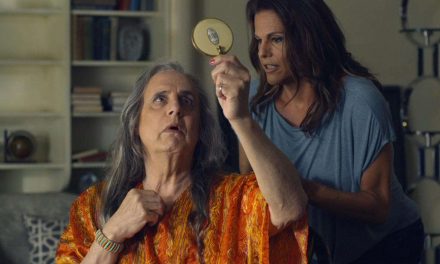It could be said that Australia’s unique history has shaped the diversity of its peoples, and the Australian life-styles of today. Australia is both a very ancient and a very young nation. The diverse Australian Indigenous peoples were and still are the First Australians, and the true owners of the land. Despite the British Empire’s 1770 claim on the land as one of its colonies, and white Australia’s announcement of Australia as a nation with the birth of Federation in 1901, “Australia” was in fact a nation long before that; and so long before the British deportation of convicts to Australia and the subsequent arrival of the Anglo-Celtic-European settlers; and the supposed much earlier arrival of Chinese traders; and the much later arrival of the many different nationalities during the Gold Rushes. In more modern times, there is also the extensive immigration from many different nationalities and cultures, and Australia’s intakes of refugees. All these peoples, whether born in Australia or naturalized, are Australians though some hold dual citizenship.
The Australian nation’s history is closely tied to the national and cultural identity. In many countries, but perhaps more so in Australia, there is no single or fixed national identity. In actuality, an Australian national identity does not exist rather there is a process of something that is unfurling or “becoming” some semblance of a sort of truth; there is no one history rather many diverse histories that overlay or color each the other; there is no one heritage or culture rather divers heritages and cultures; there is no one religion rather many; all of which sit together, side-by-side, and despite the common myths, not always so well or easily. Numerous writers note that in the Australian society there is a “visible” fracture, and also a disconnectedness between what many Australians have imagined themselves to be a part of in the past. The Australian histories, what came before and what has happened since, and how this has been incorporated or interpreted, together with the Australian environment and the geography of the land, and with Australia’s unique type of multiculturalism, has helped to shape what is variously described as the Australian character, and the society.
Australian television and film period dramas are involved in conversations about who the Australian peoples were, and who they are now in the current time. These types of productions work, or rework, the numerous factors involved in “telling” the Australian story, and in so doing explicitly and implicitly bring to light the many various issues that are as relevant to the Australian society today as they were in the period portrayed on screen. In exploring the deeper issues, these sorts of filmic dramas capture and convey something of the atmosphere/s of a particular time. Admittedly, these same issues may have been viewed differently and drawn different responses in the past to what happens now. Of course, with period dramas, the angle from which the issues are approached, the way in which past times are depicted, and the questions that arise from these discussions, also depend to some degree or another, on the writer/s and the producer/s own points-of-view and particular agendas and artistic skills, as well as the message/s intended for, or inadvertently conveyed to, the viewer. It can be said that Australian television and film period dramas raise big questions for the Australian society of today to ponder. Staying specifically with those produced in Australia, examples of these types of period dramas are: the hugely popular television series, The Sullivans (aired 1976-1983); Against the Wind (released in 1978); Redfern Now (aired 2012-2013); A Place to Call Home (premiered in 2013); and the much-loved films, The Chant of Jimmie Blacksmith (first screened in 1978); Rabbit Proof Fence (released in 2002); The Dressmaker (released in 2015); Ladies in Black (premiered in 2018).
Some suggestions for potential contributors and questions that could be addressed may include but are not limited to:
- What are some of the cultural and/or social aspects and issues raised in a particular Australian television/ or film period drama?
- What are, and how do these types of productions convey, the differences or sameness between the fictionalized portrayals and the realities of the times, and social dictates of the Australian culture then in relation to those of today?
- In Australian television and filmic period dramas, how might class, ethnicity, culture, race, gender, and history, shape these representations for the viewers?
- Are there cultural or historical antecedents for consideration of portrayals of the Australian outlook in small and-or large screen period dramas?
- How are the Australian viewpoints expressed in any one or two or more Australian period screen dramas conveyed to the viewer, and what might be the producers motivations in each case?
- What makes Australian period drama TV/films distinct from (maybe even bolder than), say, their British counterparts? What happens when British dramas present Australia on film (for example, “Banished” (first released 2015) )? Is Australian history sometimes just a different backdrop or central to interrogating specific issues/themes?
- How do these Australian dramas restore marginalized histories and voices?
- Chapters about late 20th-c dramas as well as recently popular ones are encouraged, and could include APTCH, Miss Fisher’s Murder Mysteries, Ms. Fisher’s Modern Murder Mysteries, Love Child, The Doctor Blake Mysteries, Australia, My Brilliant Career, Gallipoli, Anzac Girls, Emma’s War, and more.
This collection of scholarly essays will make an intervention in the field: it will be the first of its kind to make a comprehensive study of Australian screen period dramas, to explore whether or not there are characteristic features of the Australian history/histories, culture, and psyche; to establish a new and dynamic area of theoretical research in history, social history, gender studies, cultural and social studies, and the humanities in general; to point the way to possible future work in an ever-expanding field of cross-disciplinary fields through examining various portrayals of Australian histories and the peoples; and to permit scholarly consideration of the extent to which the producers of Australian history narratives for screen, establish popular representations of periods that are an intrinsic part of the Australian society and culture as a whole.
Submission instructions:
At this initial stage, in lieu of “chapters,” this proposed work, Writing Australian History on Screen, calls for extended abstracts for consideration for inclusion in the book.
- The extended abstracts must be more than 1,000 and less than 1,500 words.
(Full-length chapters of 6,000 – 7,000 words each (including notes but excluding references lists, title of work, and key words) will be solicited from these abstracts.) - Please keep in mind that your essay-chapter will be written from your extended abstract. Your abstract will carry the same title as your essay-chapter.
- To be considered, an abstract must be written in English, and submitted as a Word document.
- When writing your abstract use Times New Roman point 12, and 1.15 spacing.
- At the beginning of your extended abstract, immediately after the title of your work and your name, add 5 to 8 keywords that best relate to your work.
- Use the Chicago Manual of Style 16th Edition.
- Since this work is intended for Lexington Books, USA, please use American (US) spelling not English (UK) spelling, and not Australian English spelling;
- Use the Merriam-Webster’s Collegiate Dictionary;
- Use endnotes and not footnotes, use counting numbers not Roman numerals, and keep the endnotes to a bare minimum, working the information into the text where possible;
- Do cite all your work in your extended abstract as you would in a full chapter.
- in the body of the abstract, add parenthetical in-text citations (family name of author and year, and page number/s) (e.g. Smith 2019, 230);
- fully reference all in-text citations in alphabetical order, in the References list at the end of your abstract;
- Please send your abstract as a Word document attached to an email;
- To this same email please also attach, as separate Word documents, the following:
- Your covering letter, giving your academic title/s, affiliation, your position, and your home and telephone, your home address, and your email contact details;
- A short bio of no more than 200 words;
- Your C.V., giving your publications to date, and the publishing details and dates.
Editors: Professor Julie Anne Taddeo, Research Professor of History, University of Maryland, USA,
and Dr Jo Parnell, Conjoint Research Fellow, School of Humanities and Social Science, Faculty of Education and Arts, University of Newcastle, Australia.
Papers should be forwarded to both editors:
Julie Anne Taddeo taddeo@umd.com
Jo Parnell Jo.Parnell@newcastle.edu.au alternatively annette.parnell@newcastle.edu.au or joandbobparnell@bigpond.com






